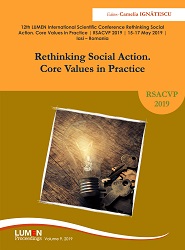The Symbol, the Sign and the Secret in the Ecstatic Language of the Zohar
The Symbol, the Sign and the Secret in the Ecstatic Language of the Zohar
Author(s): Marius Cucu, Oana Elena Lenţa
Subject(s): Social Philosophy, Social Theory
Published by: Editura Lumen, Asociatia Lumen
Keywords: Kabbalah; Zohar; sign; symbol; secret; ecstasy; divine name; mystery; time; transience; initiated;
Summary/Abstract: Humanity has always sought formulas of access to the timeless register of the transcendence, depending on the mode of perception and representation of it, and not least in the light of the cultural level and of the value system which the subject reported to. The text of the Zohar or the Book of Splendor fits in the tradition of mystical writings that try to assume not only a way of thinking relying on the immanent-transcendent polarity, but also on living the ecstasy of finding themselves on the boundary of the two dimensional paradigmatic frameworks. Such an individual experience can only be expressed and potentiated through the recourse to typologies of the mystical language including the fusion of the symbol, the sign and the secret. For the initiated one, considered the master, but also for the disciple, the mysteries of transcendence, of spirituality of the divine world cannot be accessed only through a comprehensive exercise of detaching the consciousness from the materiality. This implies not only the meditation, but also the adoption of a language that does not express the Spirit, but opens the way for the Spirit. Thus, it is considered that the call of the divinity is a mystery around which the soul of the individual may only linger in an ecstatic way and once it previously reached a maximum level of catharsis, purification and enlightenment.
Book: Rethinking Social Action. Core Values in Practice
- Page Range: 66-73
- Page Count: 7
- Publication Year: 2019
- Language: English
- Content File-PDF

